
The Unity Ranger Station is a United States Forest Service compound consisting of five buildings and a lookout tower in the Wallowa-Whitman National Forest of northeastern Oregon. It was previously the administrative headquarters for the Unity Ranger District. It is located in the small unincorporated community of Unity, Oregon. The historic structures were built in the rustic style by the Civilian Conservation Corps between 1936 and 1938. Today, the ranger station is only used during the summer months to house Forest Service fire crews. The ranger station is listed on the National Register of Historic Places.
Architects of the United States Forest Service are credited with the design of many buildings and other structures in National Forests. Some of these are listed on the National Register of Historic Places due to the significance of their architecture. A number of these architectural works are attributed to architectural groups within the Forest Service rather than to any individual architect. Architecture groups or sections were formed within engineering divisions of many of the regional offices of the Forest Service and developed regional styles.

Linn Argyle Forrest, Sr. (1905–1987) was an American architect of Juneau, Alaska who worked to restore "authentic Southeast Alaska Native architecture, especially totem poles". During the 1930s and the Great Depression, he oversaw Civilian Conservation Corps programs of the New Deal to preserve totem poles and other aspects of traditional, native architecture. In conjunction with a $24,000 U.S. grant to the Alaska Native Brotherhood as a CCC project, Forrest oversaw the construction of the Shakes Island Community House and totems at Wrangell, Alaska during 1937–1939. Drawing on this experience, he later wrote The Wolf and the Raven: Totem Poles of Southeastern Alaska, which has been printed in 20 editions.
The Breitenbush Guard Station in Willamette National Forest, Detroit, Oregon was designed by architects of the United States Forest Service and was built by the Civilian Conservation Corps in 1935.
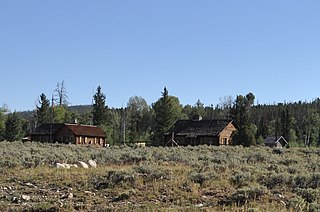
The Brush Creek Work Center in Medicine Bow National Forest near Saratoga, Wyoming is a ranger station of the USDA Forest Service, Region 2 that was built during 1937-41 and is listed on the National Register of Historic Places. It was designed by architects of the United States Forest Service in rustic style. The designs were applications of standard plans.
The Butte Falls Ranger Station, located in Rogue River – Siskiyou National Forest in Butte Falls, Oregon, was built in 1935 by the Civilian Conservation Corps. It was designed by architects of the United States Forest Service in rustic style.

The Cedar Guard Station No. 1019 in the Rogue River – Siskiyou National Forest, near Cave Junction, Oregon, was built in 1933 by the Civilian Conservation Corps. It was listed on the National Register of Historic Places in 1986 for its architecture. It was designed by Forest Service architects in rustic style. The listing included two contributing buildings, a single dwelling and a garage, on a 10-acre (4.0 ha) area.

The Early Winters Ranger Station Work Center in the Okanogan–Wenatchee National Forest near Winthrop, Washington was built in 1936 by the Civilian Conservation Corps. It was listed on the National Register of Historic Places in 1986 for its architecture. It was designed by the Northwest Region 6 group of architects of the United States Forest Service, the USDA Forest Svce. Architecture Group. The listing included nine contributing buildings over a 9.9-acre (4.0 ha) area, reflecting Rustic architecture. Building functions included as single dwelling, secondary structure, government office, and warehouse.

La Wis Wis Guard Station No. 1165 in Gifford Pinchot National Forest near Packwood, Washington was built by the Civilian Conservation Corps. It is a 1+1⁄2-story wood-frame structure on a concrete foundation. It was designed by the Region 6 architects of the United States Forest Service in Rustic style.

Leavenworth Ranger Station, also known as the Wenatchee River Ranger District, in Leavenworth, Washington was built during 1937-38 by the Civilian Conservation Corps. It was designed by the United States Forest Service's Region 6 USDA Forest Svce. Architecture Group in Rustic architecture. The listing includes nine contributing buildings on a 9.9-acre (4.0 ha) area.

The Lost Lake Guard Station in Okanogan–Wenatchee National Forest near Tonasket, Washington was built in 1940 by the Civilian Conservation Corps. It was listed on the U.S. National Register of Historic Places on April 11, 1986. It was designed by the USDA Forest Svce. Architecture Group of the Pacific Northwest region in Rustic architecture. The listing included a 1.3-acre (0.53 ha) area.
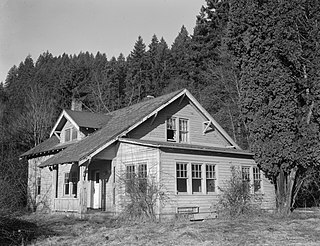
Randle Ranger Station-Work Center in Gifford Pinchot National Forest near Randle, Washington was built during 1935-36 by the Civilian Conservation Corps. It was listed on the National Register of Historic Places in 1986 for its architecture. It was designed by the USDA Forest Svce. Architecture Group in Rustic architecture. The listing included seven contributing buildings including a single dwelling, a secondary structure, a warehouse, and a fire station on a 5-acre (2.0 ha) area.

The Lowell Ranger Station compound is in the Coronado National Forest of southern Arizona. It is located in Pima County, near Tucson.

The Glide Ranger Station in Umpqua National Forest near Glide, Oregon was built in 1938 by the Civilian Conservation Corps. It served historically as a government office. It was listed on the National Register of Historic Places in 1986 for its architecture. It was designed by architects of the United States Forest Service in Rustic and other architecture.
Architects of the National Park Service are the architects and landscape architects who were employed by the National Park Service (NPS) starting in 1918 to design buildings, structures, roads, trails and other features in the United States National Parks. Many of their works are listed on the National Register of Historic Places, and a number have also been designated as National Historic Landmarks.
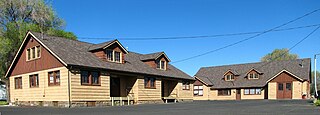
The Lamonta Compound – Prineville Supervisor's Warehouse is a complex of buildings and related infrastructure owned an operated by the Ochoco National Forest in Prineville, Oregon, United States. Built by the Civilian Conservation Corps in 1933–1934, it is the headquarters for field operations in the national forest and is typical of projects carried out by the CCC on behalf of the Forest Service. It represents that era's shift in the Forest Service's architectural vision toward comprehensive site planning, as well as its policy evolution from custodial superintendence of the national forests toward active natural resource management.

The Billy Meadows Guard Station is a Forest Service Guard Station located in the Wallowa–Whitman National Forest near Joseph, Oregon, USA. In addition to the main residence, the station also includes a garage, warehouse, barn, and oil and gas house. The residence has a rustic design; the exterior walls use shiplap to resemble a log cabin, and the gabled front porch is supported by two logs. The original gable roof was wood shingled to fit the rustic theme but has since been replaced with sheet metal. The Civilian Conservation Corps built the guard station during the Great Depression.

The College Creek Ranger Station, near Imnaha, Oregon, United States, outside of Enterprise, Oregon, was built in 1935. It is located along the Imnaha River in the Wallowa–Whitman National Forest. It includes rustic architecture of USDA. It was listed on the National Register of Historic Places in 1991; the listing includes four contributing buildings.
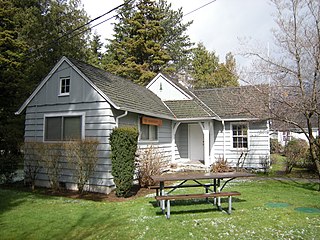
The North Bend Ranger Station is a collection of buildings operated by the USDA Forest Service in the Mount Baker-Snoqualmie National Forest. Constructed by the Civilian Conservation Corps (CCC) in 1936, it was added to the National Register of Historic Places in 1991. The multiple buildings indicate the expansion of Forest Service responsibilities from custodial supervision to extensive resource management. North Bend Ranger Station is considered historic both for its distinctive rustic architecture and for its association with the federal New Deal programs.
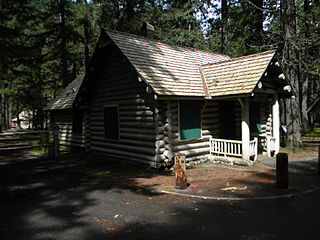
The buildings of the Silver Creek Ranger Station typify Civilian Conservation Corps (CCC) and Economic Recovery Act (ERA). These relief programs employed local youth and experienced craftsmen. Building materials and camp supplies were obtained locally. The U.S. Forest Service's was the host agency and the facility was the headquarters for field operation The design of the buildings is an example of the rustic architectural style used by the Forest Service. Building 1362 is rare. Only three log Depression-era offices are known in the Pacific Northwest Region.


















